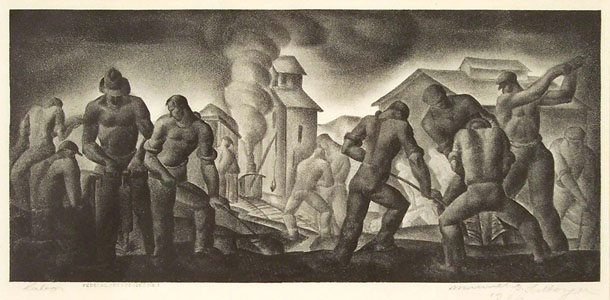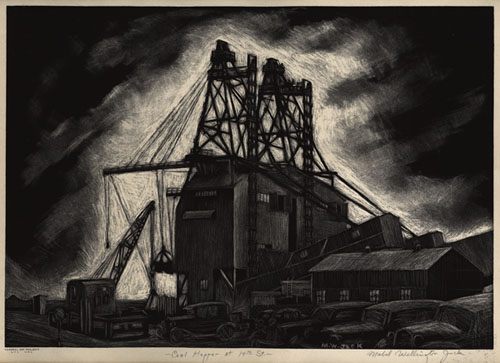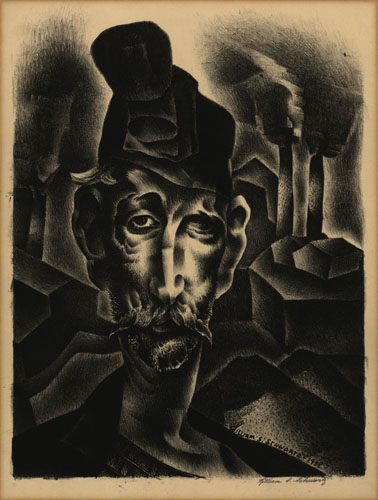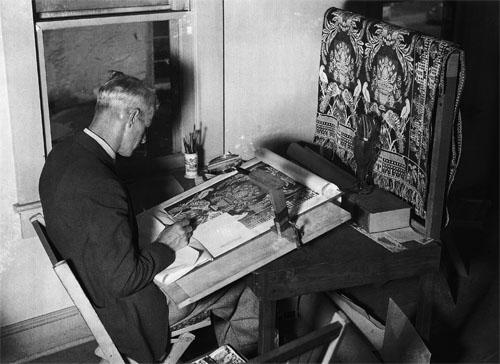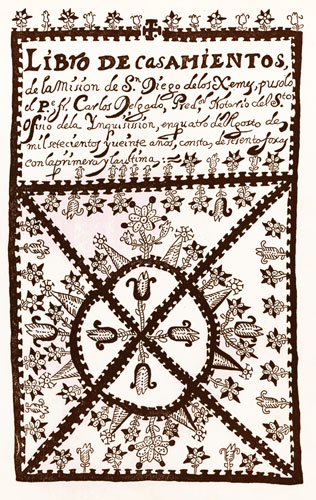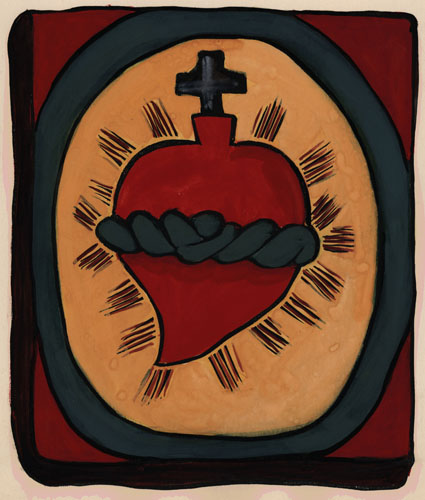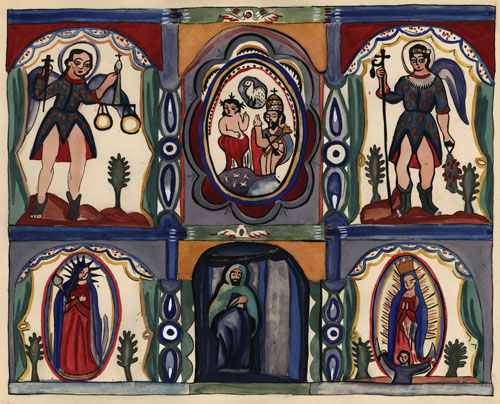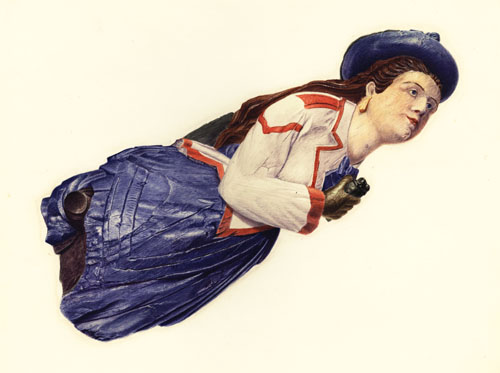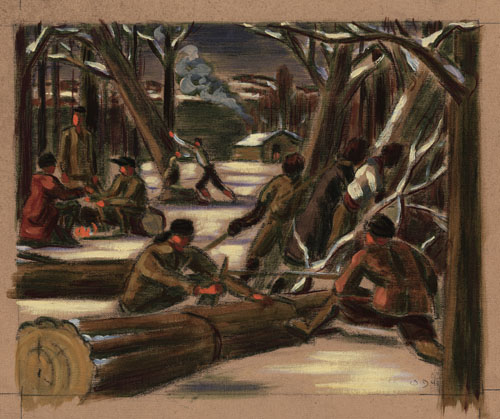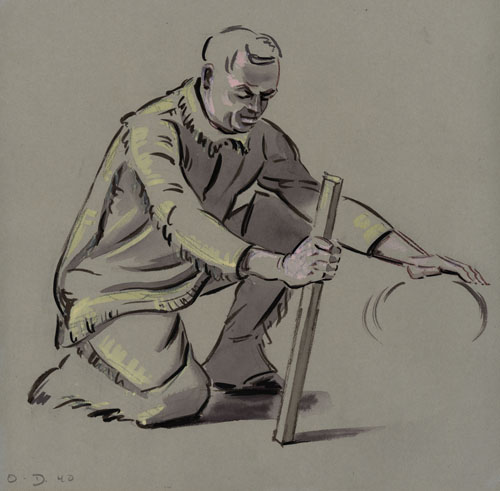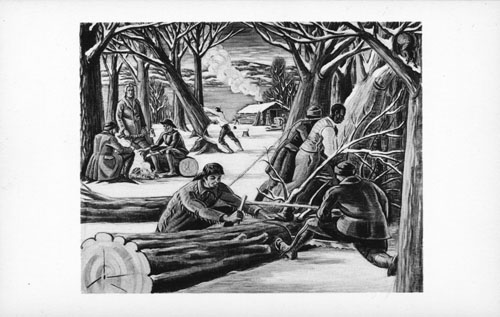 Web Content Display
Web Content Display
"I, too, have a dream-to show people in the out of the way places, some of whom are not only in small villages but in corners of New York City-something they cannot get from between the covers of books-some real paintings and prints and etchings and some real music."
Franklin Roosevelt to Hendrik Willem Van Loon, January 6, 1938
 Web Content Display
Web Content Display
 Web Content Display
Web Content Display
FDR's New Deal provided federally-funded jobs for millions of unemployed Americans during the Great Depression. These included jobs for tens of thousands of artists, including musicians, actors, dancers, writers, photographers, painters, and sculptors. Asked why the government should provide jobs for unemployed artists, New Deal administrator Harry Hopkins replied, "Hell, they've got to eat just like other people."
Government art programs rescued artists from poverty and despair. But they also served a larger purpose-to give all Americans access to art and culture. New Deal artists brought theater, music, and dance to every corner of the nation and created hundreds of thousands of paintings, prints, drawings and sculpture. Their work continues to adorn public buildings throughout the country.
 Web Content Display
Web Content Display
 Web Content Display
Web Content Display
 Web Content Display
Web Content Display
 Web Content Display
Web Content Display
The Index of American Design
One important art project undertaken during the New Deal was the Index of American Design (IAD). Nearly 400 artists were put to work locating three-dimensional examples of American design from around the nation. They made renderings of objects ranging from weather vanes and glassware to religious icons, tavern signs, quilts and furniture. In the process they amassed a rich record for future study and artistic inspiration.
The Portfolio of Spanish Colonial Design in New Mexico was a typical IAD undertaking. Artists from New Mexico crisscrossed their state searching for
"a cross section of the characteristic type of material made in New Mexico during Colonial times." They then created faithful color reproductions of these artworks. Most of the images in the Portfolio are reproductions of religious folk art painted on wood panels (retablos) and three-dimensional religious icons (bultos).
Only 200 copies of the Portfolio were produced. The FDR Library has a complete set, consisting of 50 hand-colored woodblock prints. Four of these prints are displayed here.
 Web Content Display
Web Content Display
 Web Content Display
Web Content Display
 Web Content Display
Web Content Display
 Web Content Display
Web Content Display
 Web Content Display
Web Content Display
 Web Content Display
Web Content Display
 Web Content Display
Web Content Display
Print this coloring page of the silkscreen print above and enjoy! Feel free to post your work on your social media and use #ColorOurCollections and tag us.
 Web Content Display
Web Content Display
 Web Content Display
Web Content Display
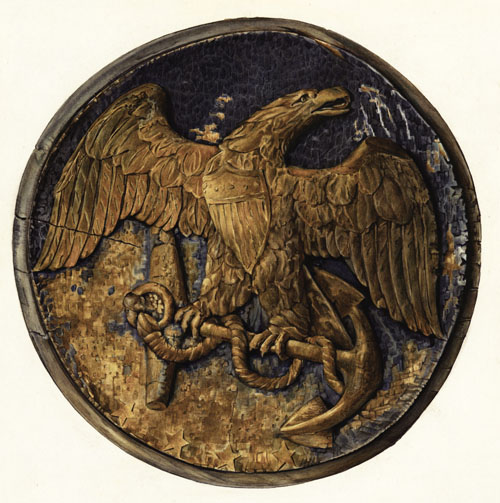 Figurehead from an unidentified ship, Watercolor, Victor Muollo Late 1930s, Federal Art Project of New York City, Works Progress Administration (WPA), MO 1956.231. One of a series of watercolors of early ship carvings produced by the Federal Art Project of Massachusetts for the Index of American Design. This carving served as an ornament for a porthole cover.
Figurehead from an unidentified ship, Watercolor, Victor Muollo Late 1930s, Federal Art Project of New York City, Works Progress Administration (WPA), MO 1956.231. One of a series of watercolors of early ship carvings produced by the Federal Art Project of Massachusetts for the Index of American Design. This carving served as an ornament for a porthole cover.  Web Content Display
Web Content Display
New Deal Murals
One of the most enduring artistic legacies of the New Deal are hundreds of colorful murals that adorn post offices, libraries, public schools, and other government buildings around the nation.
One example can be found in the lobby of the Hyde Park Post Office, located on Route 9, two miles north of the FDR Library. The mural depicts scenes from the history of this area. It was created by Dutchess County artist, Olin Dows. Dows was a friend and neighbor of Franklin Roosevelt and the President took an active interest in the mural's design. The Library has an extensive collection of Dows' study sketches, drawings, and paintings for this mural and another mural he made for the Rhinebeck Post Office. The collection documents every stage in the design process. This panel features several samples from the Dows collection that focus on one section of the Hyde Park Post Office mural.




